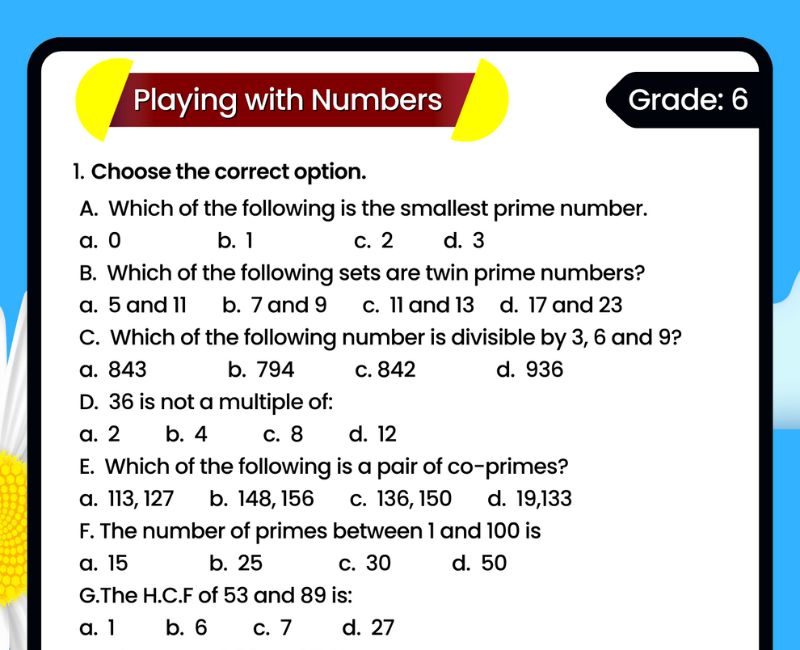CBSE Worksheet For Class 6 Maths Playing With Numbers
Unleash the joy of mathematics into your child's learning journey with the vibrant collection of CBSE Worksheets for Class 6 Maths: Playing With Numbers. These engaging worksheets are meticulously designed to transform numbers from daunting to delightful, breaking the traditional barriers of math education.
Each page is a playground where numbers dance, patterns emerge, and puzzles challenge the curious mind, all while aligning seamlessly with the CBSE curriculum. As students dive into these exercises, they embark on a thrilling adventure, exploring the mysteries of arithmetic, unlocking the secrets of divisibility, and decoding the language of numbers in the most playful manner.
The worksheets not only hone mathematical skills but also boost confidence, ignite creativity, and foster a deep-seated love for learning. With a blend of challenges ranging from easy to complex, the CBSE Worksheet for Class 6 Maths: Playing With Numbers ensures that every child finds joy in the journey of discovery, making every lesson a memorable expedition into the world of mathematics.
Introduction to Number System and Place Value - Understand the structure of number system and basics of place value.
Learning the basics of numbers and place value is essential for any student who wants to excel in math. With this class 6 worksheet, children can get a better understanding of the underlying mechanisms and structure of both number system and place value by solving several curated practice questions. With clear descriptions and examples, these practice questions can easily be solved by learners and help them gain a stronger understanding of number system fundamentals.
Understanding Fractions - Learn how fractions are identified, compared, simplified and represented in different forms.
Fractions are an important concept in mathematics, and one of the essential topics taught in class 6. In this worksheet, we provide a variety of questions that help students understand fractions and figure out how to compare them, simplify them, and represent fractions on number lines. Along with basic concepts, this worksheet helps learners gain more confidence and get more comfortable when dealing with fractional numbers.
Multiplying Two-Digit Numbers - Practice multiplying two-digit numbers by single digit numbers with fun activities.
Solve multiplication problems and use the two-digit multiplication chart to help you in this activity. From simple counting to using place value, these activities will help students practice their multiplication skills with two-digit numbers. Boost your understanding of how to solve for quotients with this module and see how easy it can be!
Application of Operations on Numbeers - Put your learning into practice with real-life scenarios and special types of questions.
This worksheet tests the application of Operations on Numbers, solving larger multi-digit dividend and divisor problems with long division method. It also presents practical problems related to calculating area, volume and circumference of a circle, along with percentage and time calculations. With these questions, students can practice how to use their existing knowledge in order to solve day-to-day scenarios and make real-life decisions.
In today's world of education, playing with numbers class 6 worksheets have become an essential part of the learning process for children. These worksheets are designed to provide a fun and engaging way for students to grasp the core concepts of mathematics. From understanding basic arithmetic to solving more complex problems, playing with numbers class 6 worksheet offers a comprehensive and interactive learning experience for young minds. The playing with numbers class 6 worksheet with answers not only helps students practice their skills but also allows them to check their work and learn from any mistakes they may have made.
In this digital age, finding a class 6 playing with numbers worksheet is easier than ever before. Numerous resources are available online, including the playing with numbers class 6 worksheet with answers pdf and playing with numbers class 6 worksheet pdf. These printable worksheets can be easily downloaded and used by students at home or in the classroom. For a more comprehensive practice, the playing with numbers class 6 test paper pdf offers a complete assessment of a student's understanding of the topic.





